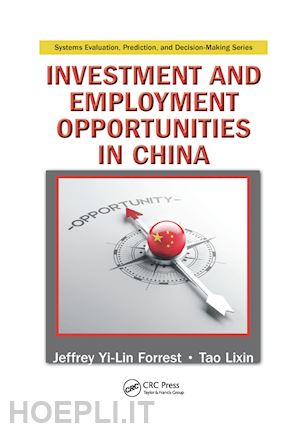Jeffrey Yi-Lin Forrest, also known as Yi Lin, holds all his educational degrees (BS, MS, and PhD) in pure mathematics, respectively, from Northwestern University (China) and Auburn University (USA) and had one year postdoctoral experience in statistics at Carnegie Mellon University (USA). Currently, he is a guest or specially appointed professor in economics, finance, systems science, and mathematics at several major universities in China, including Huazhong University of Science and Technology, National University of Defense Technology, Nanjing University of Aeronautics and Astronautics, and a tenured professor of mathematics at the Pennsylvania State System of Higher Education (Slippery Rock campus). Since 1993, he has been serving as the president of the International Institute for General Systems Studies, Inc. Along with various professional endeavors he organized, Dr. Forrest has had the honor to mobilize scholars from over 80 countries representing more than 50 different scientific disciplines. Over the years, Professor Forrest has and had served on the editorial boards of 11 professional journals, including Kybernetes: The International Journal of Systems, Cybernetics and Management Science, Journal of Systems Science and Complexity, International Journal of General Systems, and Advances in Systems Science and Applications. Also, he is the editor-in-chief of two book series, one of which is titled Systems Evaluation, Prediction and Decision-Making, published by CRC Press (New York, USA), an imprint of Taylor & Francis since 2008, and the other one titled Communications in Cybernetics, Systems Science and Engineering, published by CRC Press (Balkema, the Netherlands), an imprint of Taylor & Francis since 2011.Some of Dr. Forrest’s research was funded by the United Nations, the State of Pennsylvania, the National Science Foundation of China, and the German National Research Center for Information Architecture and Software Technology. Professor Forrest’s professional career started in 1984 when his first paper was published. His research interests are mainly in the area of systems research and applications in a wide-ranging number of disciplines of the traditional science, such as mathematical modeling, foundations of mathematics, data analysis, theory and methods of predictions of disastrous natural events, economics and finance, management science, philosophy of science, and so on. By the end of 2012, he had published over 300 research papers and over 40 monographs and edited special topic volumes by such prestigious publishers as Springer, Wiley, World Scientific, Kluwer Academic (now part of Springer), Academic Press (now part of Springer), and others. Throughout his career, Dr. Jeffrey Forrest’s scientific achievements have been recognized by various professional organizations and academic publishers. In 2001, he was inducted into the honorary fellowship of the World Organization of Systems and Cybernetics.Lixin Tao, a retired professor from Jiangxi University of Finance, was born on November 10, 1944. He received his undergraduate education as a mathematics major from Jiangxi University. Currently, he is on the economics faculty in Huashang School of Guangdong Business College. During his 37 years of university teaching, he has taught 26 different courses in diverse areas such as mathematics, systems science, economics, international trade, management, business studies, and statistics. Currently, Professor Tao has completed over 80 research projects, published over 5,000,000 words of papers in major scholarly journals and monographs covering many scientific disciplines, including econometrics, economics of technology, optimized management, statistical measurement, international trade, law, and so on.











